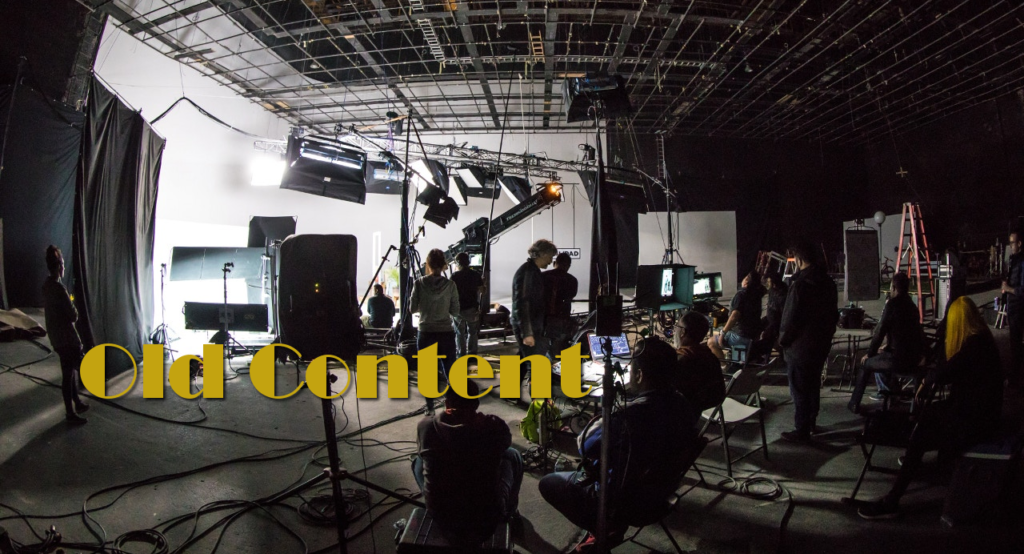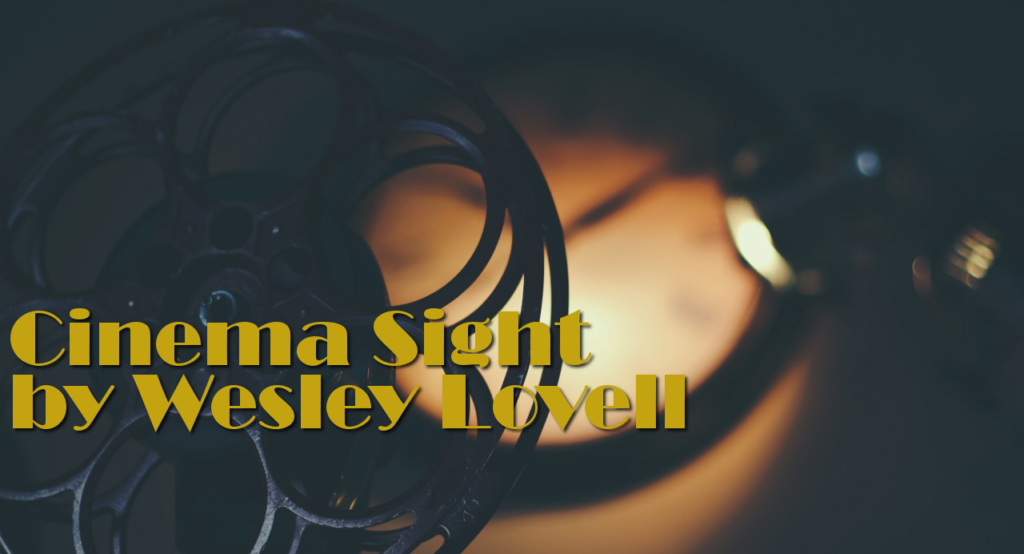I don’t often have the privilege of reading the novel upon which a successful adaptation is based, better yet two such film representations. I first sat down to The Girl with the Dragon Tattoo with the David Fincher film late last year and have since taken up the novel and the original Swedish adaptation before scribbling down a few words on each. Not having the ability to parallel three distinct works at the same time, my approach may be a bit different from what you expect, but I’ll do my best to keep things in perspective.
The Plot
Before digging into the meat of my reviews, let’s get the crucial plot elements out of the way first. It begins as Mikael Blomkvist, a magazine publisher and anti-corporate investigative journalist, has been convicted of libel against a powerful business magnate Hans-Erik Wennerstrom. Blomkvist, as the novel reveals, had gone after Wennerstrom with a story whose sources dried up the instant his article was published. Instead of fighting tooth and nail and possibly destroying his publication with him, Blomkvist decided to roll over for Wennerstrom and take his beating, accepting a short prison sentence and financial restitution.
As he struggles to decide what he’ll do next, a surprise visit by the lawyer of one Henrik Vanger, himself the head of a once-powerful company. Henrik wants to hire Mikael to write a chronology of his family’s history while secretly working to uncover the murderer of his great-niece Harriet who disappeared decades earlier on the eve of a freak accident that sequestered an island filled with family and leading him to suspect one of them was responsible for the reprehensible act.
As Mikael begins putting together the family’s saga and digging into the mystery surrounding Harriet’s disappearance, several irregularities begin to emerge and not all of them are associated with the Nazi sympathies of a small number of members the Vanger clan. As the enigma unravels, Blomkvist realizes he’s in deeper than he thought and attempts to aid his research by hiring the profiler who investigated him without his knowledge.
Enter the girl with the dragon tattoo, Lisbeth Salander, a socially maladjusted and sexually abused ward of the state. Her photographic memory enables her to further crack the vast web of intrigue that surrounds the affair while beginning to fall in love with the charismatic Blomkvist, the paternal figure she never had, and the one man who hasn’t tried to beat her, sleep with her or do other deplorable things to her.
The Literary and the Filmic
The Girl with the Dragon Tattoo (2005)
I don’t normally review books here as I’m not a literary critic, nor will I pretend to be one. I’m as much a fan of the likes of Agatha Christie, Stephen King and Sue Grafton as I am of George Orwell and Bram Stoker. When I pick up a book, I want it to entertain more so than I want it to inform. I’m a slow reader. I always have been. It takes me at least twice as long to read what normal readers can. I understand every word, but being detail-oriented, I spend more time poring over each letter, word and sentence that I read than someone reading for basic comprehension might.
I have read quite a few books, just none that would be considered high art (unless you count the likes of Gregory Maguire’s Wicked or Mark Z. Danielewski’s House of Leaves). I’m not sure what I expected from Stieg Larsson’s novel. I love murder mysteries, so there should have been plenty for me to appreciate in the book, yet unlike the film versions on which it was based, the story spends half its length digging into backstory and seemingly unnecessary details that by the time the first break in the case occurred, I was already dragging my feet on finishing it out. Even the most interesting details can keep me engaged, but there’s so much overindulgence in those first pages that liking the novel as a whole was going to be impossible.
Grafton’s books have a similar structure, taking several chapters to get into the meat of the story, but Larsson doesn’t seem to know how to engage his reader very easily. Once the story started chugging along to its conclusion, things started to get more intriguing, but I was already vaguely disinterested, which made even those pages seem interminable. Then the story resolves and the killer is revealed, but it doesn’t end there. The book goes into more detail about the fallout of his discovery than either film. We find out more about the Wennerstrom affair and even more details are exposed that validate your dislike of the character even though he’s barely a presence in the book. While some readers might find these last chapters rather tedious, I was endlessly fascinated and that may have been because I was getting details that weren’t more economically presented in the film (Fincher’s) itself.
The Girl with the Dragon Tattoo (2009)
![]()
![]()
![]()
![]()
Niels Arden Oplev
Nikolaj Arcel, Rasmus Heiserberg (Novel: Stieg Larsson)
152 min.
Michael Nyqvist, Noomi Rapace, Lena Endre, Sven-Bertil Taube, Peter Haber, Peter Andersson, Marika Lagercrantz, Ingvar Hirdwall, Björn Granath, Michalis Koutsogiannakis
R for disturbing violent content including rape, grisly images, sexual material, nudity and language.
 For the last several years, novel adaptations seem to be on the increase, especially those written in other countries. It has also become a trend that foreign language films are being adapted or re-adapted for American audiences in English. Let the Right One In (Swedish) and Let Me In (American) is probably the best example of how to and not to adapt your films. The original Swedish version was an amazing achievement. Atmospheric, clever and riveting. When it was moved over for American audiences, the more interesting elements were toned down so as not to offend the purportedly delicate sensibilities of those viewers. What resulted was a satisfying film is watched on its own, but an incredibly disappointing one when compared to its forbear.
For the last several years, novel adaptations seem to be on the increase, especially those written in other countries. It has also become a trend that foreign language films are being adapted or re-adapted for American audiences in English. Let the Right One In (Swedish) and Let Me In (American) is probably the best example of how to and not to adapt your films. The original Swedish version was an amazing achievement. Atmospheric, clever and riveting. When it was moved over for American audiences, the more interesting elements were toned down so as not to offend the purportedly delicate sensibilities of those viewers. What resulted was a satisfying film is watched on its own, but an incredibly disappointing one when compared to its forbear.
With The Girl with the Dragon Tattoo, the opposite seems true. The first adaptation of Stieg Larsson’s novel was in to the original Swedish. That film, directed by Niels Arden Oplev feels very formulaic. Built on styles more familiar to American audiences familiar with shows like CSI or NCIS, the melodrama is touched up to make it more palatable for a wide audience, while leaving some of the more complex elements from the book on the floor. In the novel, Mikael is a playboy, not unaccostomed to sleeping with every woman he comes across. In the Swedish film version, he becomes less of a player and more of a gregarious and romantically inclined character. Instead of relying on parallel stories to unravel the plot, the film increases the role of the local sheriff who does much of the research that Lisbeth does in the book. This allows the fimmaker to keep Lisbeth and Mikael together through most of the film, caring for one another and building a romantic entanglement that just isn’t as mainstream as in the book.
Most book-to-screen adaptations add and subtract information in an effort to make it more audience-friendly, but by making the original feel like an American romantic drama mystery instead of what’s ostensibly a political thriller with romantic undertones. This is a movie about a somewhat mature relationship between Mikael and Lisbeth, the murder mystery takes a back seat to much of this action. While the book does a good bit of that as well, the movie embellishes that relationship while toning down the more challenging aspects of the film, including the political and sociological impact of the story surrounding the event.
The Girl with the Dragon Tattoo (2011)
![]()
![]()
![]()
![]()
David Fincher
Steven Zaillian (Novel: Stieg Larsson
158 min.
Daniel Craig, Rooney Mara, Robin Wright, Christopher Plummer, Stellan Skarsgard, Yorick van Wageningen, Geraldine James, Steven Birkoff, Donald Sumpter, Goran Visnjic, Joely Richardson
R for brutal violent content including rape and torture, strong sexuality, graphic nudity, and language.
 Two years after the Swedish film trilogy first started rolling out, the first novel gets an American treatment at the hands of director David Fincher. Little has been said about the second and third books getting the same treatment, but presumably they are in the works, just not necessarily with Fincher attached. That’s a pity for what Fincher does with The Girl with the Dragon Tattoo is splendid and a significant improvement over the first film in the original trilogy.
Two years after the Swedish film trilogy first started rolling out, the first novel gets an American treatment at the hands of director David Fincher. Little has been said about the second and third books getting the same treatment, but presumably they are in the works, just not necessarily with Fincher attached. That’s a pity for what Fincher does with The Girl with the Dragon Tattoo is splendid and a significant improvement over the first film in the original trilogy.
More closely aligning itself with the content of the book, the American version keeps Lisbeth and Mikael separate. While it still puts them in a rather serious romantic entanglement later in the film, Lisbeth’s research of the various unconnected cases remains in the film, which enables the audience to more easily track the events instead of having a periphery character from the novel show up and reveal crucial plot elements to propel the story. This means that for almost two-thirds of the film, the pair aren’t together on screen, yet their emotional connection remains intact. Fincher creates a believable situation where Lisbeth and Mikael’s clandestine affair feels bizarre, yet natural. The book creates this feeling quite well, so it’s nice to see one of the movies get that tension right.
Fincher also has a way of taking mundane backstory and weaving it into the narrative in such a way that it’s organic, not manufactured. There are few dull moments in the film, which keeps the audience engaged for its two-and-a-half hour runtime. By comparison, the Swedish version felt almost as listless as the book. And with Fincher’s understanding of shot composition, narrative thrust and pacing, it’s easy to appreciate even the dull points. Both films follow a similar trajectory in the final act as the culprit is revealed, but Fincher has the upper hand in this fight as well. Fincher’s film sticks very closely to the books ending with only the villain’s final scenes standing in stark contrast; Oplev’s film puts the conclusion more in line with the novel, but changes many of the details. The book’s epilogue is far lengthier than either film attempts, but Fincher’s is again the better comparison as the information is presented more clearly and fascinatingly than the first film. Oplev’s movie is dull by comparison.
The Casts Compared
A case can be made for the casting choices of each major character being the best. Mikael Blomkvist is described in the book as something of a ladies man. He’s not a conventionally handsome fellow, but he’s attractive enough to be able to seduce any woman. While part of this can be attributed to his affable personality, appearance is important in these matters. Both Michael Nyqvist and Daniel Craig, the Swedish and American versions respectively, have a charming personality that fit the character well and neither seems wholly unfit for the role, but when I read the book, admittedly after seeing the Fincher film, Craig stood out as the perfect casting choice they could have made. While he’s attractive, he’s not boyishly so, the persuasive rogue personality is the perfect fit for Craig. As for performances, this may not be the most deep role for Craig, but both he and Nyvist do a fine job in their role.
It might seem an unusual statement, but the tattooed, pierced and fashionably dark Lisbeth Salandar, the differences between the Swedish and American versions are almost night-and-day. Noomi Rapace chose to take Lisbeth on a more meek path through the film. When we first meet the self conscious computer hacker, she seems dejected, crushed by the weight of the world and, in spite of being a supreme computer genius, she reacts as if everything that happens is somehow her fault. Rooney Mara’s Lisbeth seems stronger and more in control of her destiny, facing each scene with a level of disgust and anger that tends to be almost too aggressive. Mara gives her those quieter moments early in the film, but her tenacity and fierceness is more hard-edged as the film winds down than Rapace’s. Rapace may toughen up after the scene with her financial caretaker, however, she still manages to question her own motives and even her own stances, skittish, yet a pistol when cornered.
The character in the book fits more with Rapace’s depiction than Mara’s. This is a victim of cruelty, ridicule, mysogyny and rape. She is an outcast in society and has chosen to take on that role with vigor, dressing and accoutering herself to further isolate herself. Both Rapace and Mara give the character humility and passion, but Rapace more frequently embodies the novel-based version than does Mara. They are exceptional performances each, but Rapace ekes out the victory.
Christopher Plummer (American version) and Sven-Bertil Taube (Swedish version) aren’t far apart in their respective performances as the aging and nearly-infirmed Henrik Vanger. Plummer’s performance, like Mara’s, is more tenacious and fiesty than his Swedish co-star, but Plummer’s version, though more aggressive, feels like a better fit with the book. Stellan Skarsgard and Peter Haber play the American and Swedish respective versions of Martin Vanger, the current head of Vanger corporation and a friendly fellow. Fincher seems more fascinated with the aggressive natures of these characters’ personalities and here Skarsgard is again more forceful, but Haber’s more soft-spoken and aloof vision stands ahead of the talented Skarsgard.
Much of the rest of the cast doesn’t seem to have much to build characters off of, so analyzing their particular takes would be somewhat pointless. Suffice it to say that for most of the cast, good performances were delivered all around. There is one serious bit of miscasting in my mind and that’s of Lisbeth’s guardian Nils Bjurman. The novel describes him as a bookish sort, one who might not have any trouble getting a date, unconventionally attractive and personable (that is until he takes on the easily-manipulated Salander). Neither Peter Andersson nor Yorick van Wageningen fit the role very well. Andersson has the frumpy quality of the character down, but could hardly convince a woman to date him in the Swedish version; in the American, von Wageningen is significantly overweight and while you get an instant dislike of the character, he is not at all what was envisioned in the book. It should come as a surprise that Bjurman is a bastard, but both movies try to give that impression immediately through stereotype than with any force of personality and character development. I’ve heard the character is better defined in the other books, but as pictured in both Fincher and Oplev’s films, the Bjurman decisions were disappointing.
The Final Verdict
David Fincher’s films frequently fall on the side of clinical, avoiding some of the more deeply emotional elements of life; yet, in his disconnected approach, we see human nature for the stark depravity it too often possesses. In adapting Stieg Larsson’s first Millennium Trilogy book, Fincher has created another singular work of aloof observation that exposes rich characters with shades of complexity that were overlooked or toned down in the original Niels Arden Oplev feature. He also manages to present a clearer, more consistent vision of Larsson’s book than the other himself creates. It isn’t his finest work, but Fincher has molded a modestly interesting story into a fascinating one.
As a final note, I will hold off watching the second and third films in the original trilogy until I’ve read the books. I’ve learned first hand with Larsson as an author that watching a superior adaptation like Fincher’s makes an already-lengthy read feel like a droning, expansive novel, which isn’t a particularly tantalizing prospect.
June 17, 2012


















Leave a Reply
You must be logged in to post a comment.